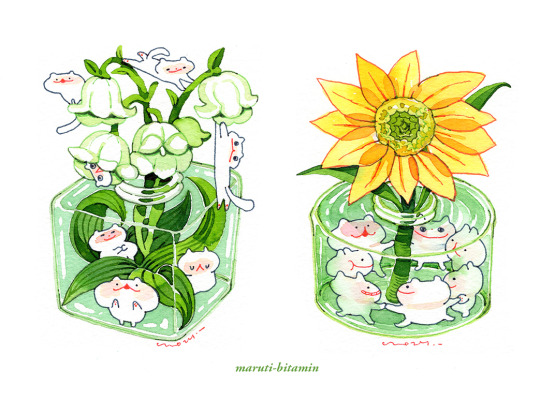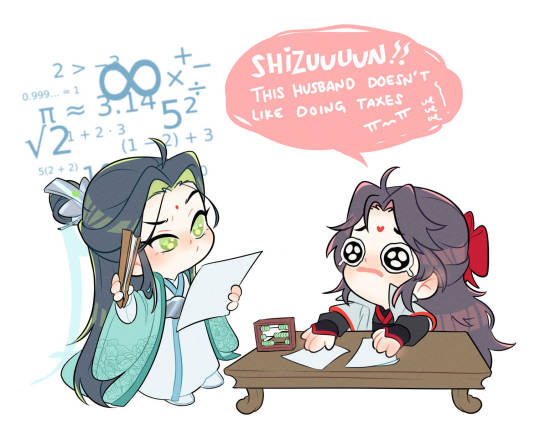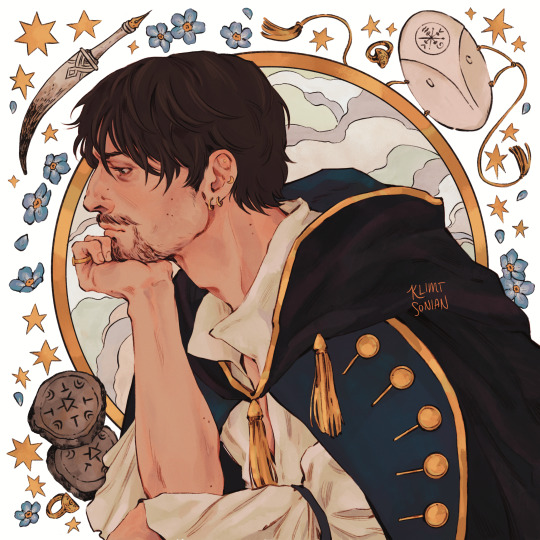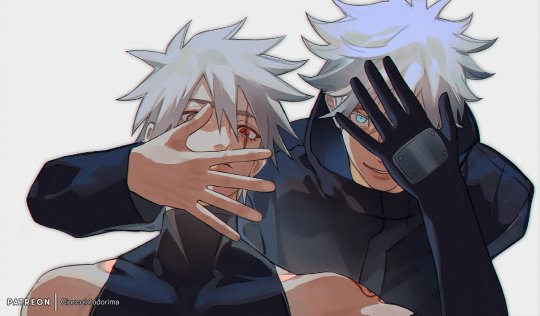Text

Bruce Springsteen, Born to Run
5K notes
·
View notes
Text

Pov: Northern Consort Shang Qinghua absolutely obliterates you during a council meeting (You can't do anything about it because King Mobei-Jun think's it's hot)
Anyway, hmm, I've been getting in touch with my inner Shen Yuan lately and thinking about silly books I like, so here are some notes about clothes in PIDM and SVSSS if you care to read:
I've been separating realm aesthetics in PIDW by Chinese dynasties, so Shang Qinghua's clothes are based on Ming and Qing dynasty aesthetics! Mostly because their winter clothes fuck lots I love them.
Nail guards! I think he wears them so he won't chew on them.
All his furs are hunted by Mobei-Jun personally.
Shang Qinghua is a very practical consort, honestly, compared to cucumber-bro he's taking to wearing almost no jewelry. It's more than he wore in his peak lord days, though, lol.
2K notes
·
View notes
Text
this was oddly motivating im gonna ruin some lives now thanks!!
I forgot that writing is very fun and that you're playing pretend. like all this shit and pressure about craftsmanship and art! NO!!!! you are a grown up playing with dolls! it is silly and you should have sooooo much fun pushing their heads together to make them smooch!!! or torturing them, which is what I did to my toys as a child, to the point where my mom thought I was going to grow up evil
21K notes
·
View notes
Text
yeah yeah yeah mortifying ordeal of being known and all that but sometimes a friend mentions something about you that you didn’t think was noticeable and it feels like your heart is being cradled in their hands
209K notes
·
View notes
Text
Fantasy Guide to Interiors



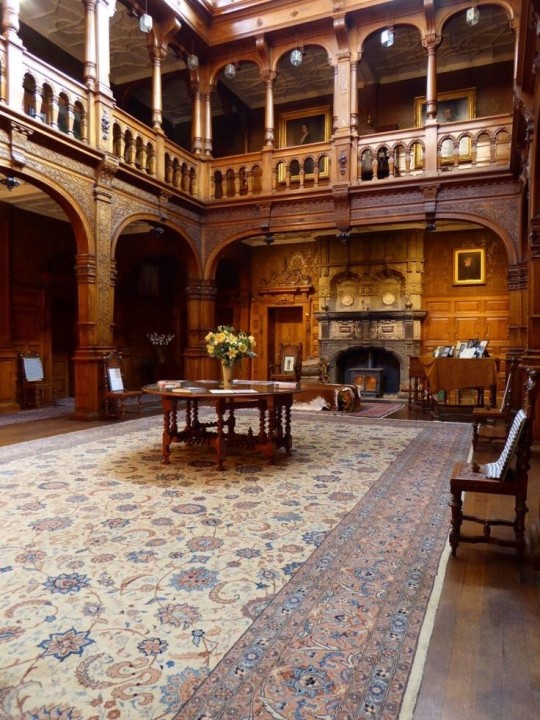
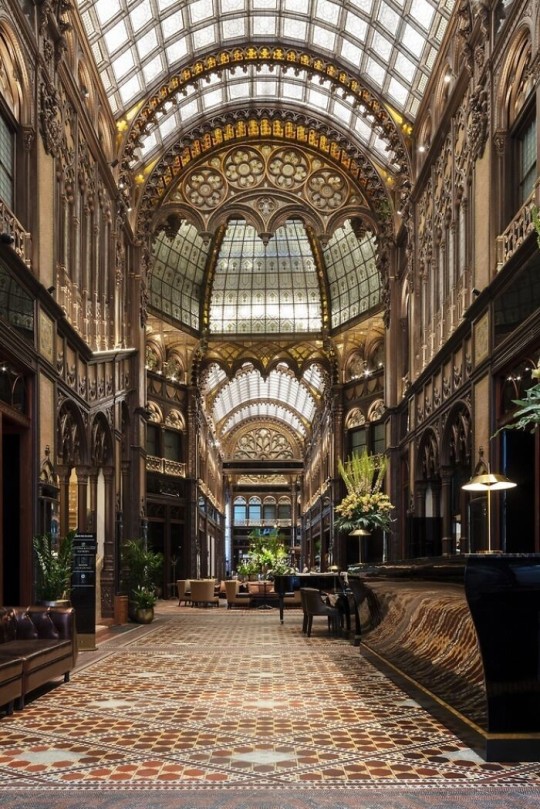
As a followup to the very popular post on architecture, I decided to add onto it by exploring the interior of each movement and the different design techniques and tastes of each era. This post at be helpful for historical fiction, fantasy or just a long read when you're bored.
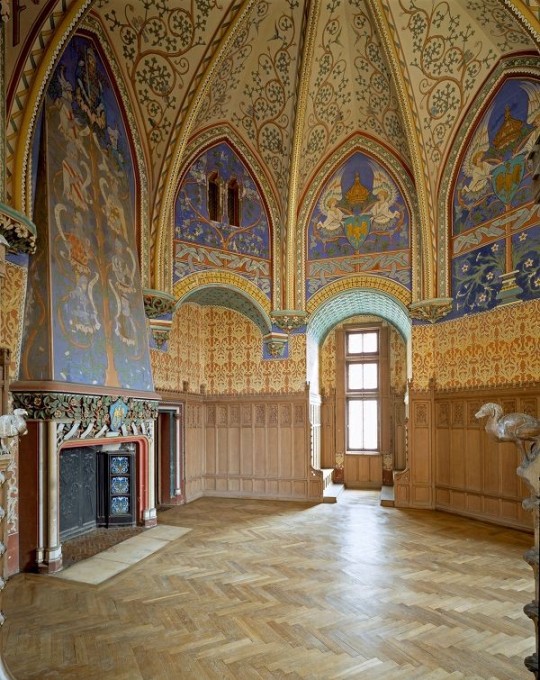


Interior Design Terms
Reeding and fluting: Fluting is a technique that consists a continuous pattern of concave grooves in a flat surface across a surface. Reeding is it's opposite.
Embossing: stamping, carving or moulding a symbol to make it stand out on a surface.
Paneling: Panels of carved wood or fabric a fixed to a wall in a continuous pattern.
Gilding: the use of gold to highlight features.
Glazed Tile: Ceramic or porcelain tiles coated with liquid coloured glass or enamel.
Column: A column is a pillar of stone or wood built to support a ceiling. We will see more of columns later on.
Bay Window: The Bay Window is a window projecting outward from a building.
Frescos: A design element of painting images upon wet plaster.
Mosaic: Mosaics are a design element that involves using pieces of coloured glass and fitted them together upon the floor or wall to form images.
Mouldings: ornate strips of carved wood along the top of a wall.
Wainscoting: paneling along the lower portion of a wall.
Chinoiserie: A European take on East Asian art. Usually seen in wallpaper.
Clerestory: A series of eye-level windows.
Sconces: A light fixture supported on a wall.
Niche: A sunken area within a wall.
Monochromatic: Focusing on a single colour within a scheme.
Ceiling rose: A moulding fashioned on the ceiling in the shape of a rose usually supporting a light fixture.
Baluster: the vertical bars of a railing.
Façade: front portion of a building
Lintel: Top of a door or window.
Portico: a covered structure over a door supported by columns
Eaves: the part of the roof overhanging from the building
Skirting: border around lower length of a wall
Ancient Greece
Houses were made of either sun-dried clay bricks or stone which were painted when they dried. Ground floors were decorated with coloured stones and tiles called Mosaics. Upper level floors were made from wood. Homes were furnished with tapestries and furniture, and in grand homes statues and grand altars would be found. Furniture was very skillfully crafted in Ancient Greece, much attention was paid to the carving and decoration of such things. Of course, Ancient Greece is ancient so I won't be going through all the movements but I will talk a little about columns.
Doric: Doric is the oldest of the orders and some argue it is the simplest. The columns of this style are set close together, without bases and carved with concave curves called flutes. The capitals (the top of the column) are plain often built with a curve at the base called an echinus and are topped by a square at the apex called an abacus. The entablature is marked by frieze of vertical channels/triglyphs. In between the channels would be detail of carved marble. The Parthenon in Athens is your best example of Doric architecture.
Ionic: The Ionic style was used for smaller buildings and the interiors. The columns had twin volutes, scroll-like designs on its capital. Between these scrolls, there was a carved curve known as an egg and in this style the entablature is much narrower and the frieze is thick with carvings. The example of Ionic Architecture is the Temple to Athena Nike at the Athens Acropolis.
Corinthian: The Corinthian style has some similarities with the Ionic order, the bases, entablature and columns almost the same but the capital is more ornate its base, column, and entablature, but its capital is far more ornate, commonly carved with depictions of acanthus leaves. The style was more slender than the others on this list, used less for bearing weight but more for decoration. Corinthian style can be found along the top levels of the Colosseum in Rome.
Tuscan: The Tuscan order shares much with the Doric order, but the columns are un-fluted and smooth. The entablature is far simpler, formed without triglyphs or guttae. The columns are capped with round capitals.
Composite: This style is mixed. It features the volutes of the Ionic order and the capitals of the Corinthian order. The volutes are larger in these columns and often more ornate. The column's capital is rather plain. for the capital, with no consistent differences to that above or below the capital.
Ancient Rome
Rome is well known for its outward architectural styles. However the Romans did know how to add that rizz to the interior. Ceilings were either vaulted or made from exploded beams that could be painted. The Romans were big into design. Moasics were a common interior sight, the use of little pieces of coloured glass or stone to create a larger image. Frescoes were used to add colour to the home, depicting mythical figures and beasts and also different textures such as stonework or brick. The Romans loved their furniture. Dining tables were low and the Romans ate on couches. Weaving was a popular pastime so there would be tapestries and wall hangings in the house. Rich households could even afford to import fine rugs from across the Empire. Glass was also a feature in Roman interior but windows were usually not paned as large panes were hard to make. Doors were usually treated with panels that were carved or in lain with bronze.
Ancient Egypt
Egypt was one of the first great civilisations, known for its immense and grand structures. Wealthy Egyptians had grand homes. The walls were painted or plastered usually with bright colours and hues. The Egyptians are cool because they mapped out their buildings in such a way to adhere to astrological movements meaning on special days if the calendar the temple or monuments were in the right place always. The columns of Egyptian where thicker, more bulbous and often had capitals shaped like bundles of papyrus reeds. Woven mats and tapestries were popular decor. Motifs from the river such as palms, papyrus and reeds were popular symbols used.
Ancient Africa
African Architecture is a very mixed bag and more structurally different and impressive than Hollywood would have you believe. Far beyond the common depictions of primitive buildings, the African nations were among the giants of their time in architecture, no style quite the same as the last but just as breathtaking.
Rwandan Architecture: The Rwandans commonly built of hardened clay with thatched roofs of dried grass or reeds. Mats of woven reeds carpeted the floors of royal abodes. These residences folded about a large public area known as a karubanda and were often so large that they became almost like a maze, connecting different chambers/huts of all kinds of uses be they residential or for other purposes.
Ashanti Architecture: The Ashanti style can be found in present day Ghana. The style incorporates walls of plaster formed of mud and designed with bright paint and buildings with a courtyard at the heart, not unlike another examples on this post. The Ashanti also formed their buildings of the favourite method of wattle and daub.
Nubian Architecture: Nubia, in modern day Ethiopia, was home to the Nubians who were one of the world's most impressive architects at the beginning of the architecture world and probably would be more talked about if it weren't for the Egyptians building monuments only up the road. The Nubians were famous for building the speos, tall tower-like spires carved of stone. The Nubians used a variety of materials and skills to build, for example wattle and daub and mudbrick. The Kingdom of Kush, the people who took over the Nubian Empire was a fan of Egyptian works even if they didn't like them very much. The Kushites began building pyramid-like structures such at the sight of Gebel Barkal
Japanese Interiors
Japenese interior design rests upon 7 principles. Kanso (簡素)- Simplicity, Fukinsei (不均整)- Asymmetry, Shizen (自然)- Natural, Shibumi (渋味) – Simple beauty, Yugen (幽玄)- subtle grace, Datsuzoku (脱俗) – freedom from habitual behaviour, Seijaku (静寂)- tranquillity.
Common features of Japanese Interior Design:
Shoji walls: these are the screens you think of when you think of the traditional Japanese homes. They are made of wooden frames, rice paper and used to partition
Tatami: Tatami mats are used within Japanese households to blanket the floors. They were made of rice straw and rush straw, laid down to cushion the floor.
Genkan: The Genkan was a sunken space between the front door and the rest of the house. This area is meant to separate the home from the outside and is where shoes are discarded before entering.
Japanese furniture: often lowest, close to the ground. These include tables and chairs but often tanked are replaced by zabuton, large cushions. Furniture is usually carved of wood in a minimalist design.
Nature: As both the Shinto and Buddhist beliefs are great influences upon architecture, there is a strong presence of nature with the architecture. Wood is used for this reason and natural light is prevalent with in the home. The orientation is meant to reflect the best view of the world.
Islamic World Interior
The Islamic world has one of the most beautiful and impressive interior design styles across the world. Colour and detail are absolute staples in the movement. Windows are usually not paned with glass but covered in ornate lattices known as jali. The jali give ventilation, light and privacy to the home. Islamic Interiors are ornate and colourful, using coloured ceramic tiles. The upper parts of walls and ceilings are usually flat decorated with arabesques (foliate ornamentation), while the lower wall areas were usually tiled. Features such as honeycombed ceilings, horseshoe arches, stalactite-fringed arches and stalactite vaults (Muqarnas) are prevalent among many famous Islamic buildings such as the Alhambra and the Blue Mosque.
Byzantine (330/395–1453 A. D)
The Byzantine Empire or Eastern Roman Empire was where eat met west, leading to a melting pot of different interior designs based on early Christian styles and Persian influences. Mosaics are probably what you think of when you think of the Byzantine Empire. Ivory was also a popular feature in the Interiors, with carved ivory or the use of it in inlay. The use of gold as a decorative feature usually by way of repoussé (decorating metals by hammering in the design from the backside of the metal). Fabrics from Persia, heavily embroidered and intricately woven along with silks from afar a field as China, would also be used to upholster furniture or be used as wall hangings. The Byzantines favoured natural light, usually from the use of copolas.
Indian Interiors
India is of course, the font of all intricate designs. India's history is sectioned into many eras but we will focus on a few to give you an idea of prevalent techniques and tastes.
The Gupta Empire (320 – 650 CE): The Gupta era was a time of stone carving. As impressive as the outside of these buildings are, the Interiors are just as amazing. Gupta era buildings featured many details such as ogee (circular or horseshoe arch), gavaksha/chandrashala (the motif centred these arches), ashlar masonry (built of squared stone blocks) with ceilings of plain, flat slabs of stone.
Delhi Sultanate (1206–1526): Another period of beautifully carved stone. The Delhi sultanate had influence from the Islamic world, with heavy uses of mosaics, brackets, intricate mouldings, columns and and hypostyle halls.
Mughal Empire (1526–1857): Stonework was also important on the Mughal Empire. Intricately carved stonework was seen in the pillars, low relief panels depicting nature images and jalis (marble screens). Stonework was also decorated in a stye known as pietra dura/parchin kari with inscriptions and geometric designs using colored stones to create images. Tilework was also popular during this period. Moasic tiles were cut and fitted together to create larger patters while cuerda seca tiles were coloured tiles outlined with black.
Chinese Interiors
Common features of Chinese Interiors
Use of Colours: Colour in Chinese Interior is usually vibrant and bold. Red and Black are are traditional colours, meant to bring luck, happiness, power, knowledge and stability to the household.
Latticework: Lattices are a staple in Chinese interiors most often seen on shutters, screens, doors of cabinets snf even traditional beds.
Lacquer: Multiple coats of lacquer are applied to furniture or cabinets (now walls) and then carved. The skill is called Diaoqi (雕漆).
Decorative Screens: Screens are used to partition off part of a room. They are usually of carved wood, pained with very intricate murals.
Shrines: Spaces were reserved on the home to honour ancestors, usually consisting of an altar where offerings could be made.
Of course, Chinese Interiors are not all the same through the different eras. While some details and techniques were interchangeable through different dynasties, usually a dynasty had a notable style or deviation. These aren't all the dynasties of course but a few interesting examples.
Song Dynasty (960–1279): The Song Dynasty is known for its stonework. Sculpture was an important part of Song Dynasty interior. It was in this period than brick and stone work became the most used material. The Song Dynasty was also known for its very intricate attention to detail, paintings, and used tiles.
Ming Dynasty(1368–1644): Ceilings were adorned with cloisons usually featuring yellow reed work. The floors would be of flagstones usually of deep tones, mostly black. The Ming Dynasty favoured richly coloured silk hangings, tapestries and furnishings. Furniture was usually carved of darker woods, arrayed in a certain way to bring peace to the dwelling.
Han Dynasty (206 BC-220 AD): Interior walls were plastered and painted to show important figures and scenes. Lacquer, though it was discovered earlier, came into greater prominence with better skill in this era.
Tang Dynasty (618–907) : The colour palette is restrained, reserved. But the Tang dynasty is not without it's beauty. Earthenware reached it's peak in this era, many homes would display fine examples as well. The Tang dynasty is famous for its upturned eaves, the ceilings supported by timber columns mounted with metal or stone bases. Glazed tiles were popular in this era, either a fixed to the roof or decorating a screen wall.
Romanesque (6th -11th century/12th)
Romanesque Architecture is a span between the end of Roman Empire to the Gothic style. Taking inspiration from the Roman and Byzantine Empires, the Romanesque period incorporates many of the styles. The most common details are carved floral and foliage symbols with the stonework of the Romanesque buildings. Cable mouldings or twisted rope-like carvings would have framed doorways. As per the name, Romansque Interiors relied heavily on its love and admiration for Rome. The Romanesque style uses geometric shapes as statements using curves, circles snf arches. The colours would be clean and warm, focusing on minimal ornamentation.
Gothic Architecture (12th Century - 16th Century)
The Gothic style is what you think of when you think of old European cathedrals and probably one of the beautiful of the styles on this list and one of most recognisable. The Gothic style is a dramatic, opposing sight and one of the easiest to describe. Decoration in this era became more ornate, stonework began to sport carving and modelling in a way it did not before. The ceilings moved away from barreled vaults to quadripartite and sexpartite vaulting. Columns slimmed as other supportive structures were invented. Intricate stained glass windows began their popularity here. In Gothic structures, everything is very symmetrical and even.
Mediaeval (500 AD to 1500)
Interiors of mediaeval homes are not quite as drab as Hollywood likes to make out. Building materials may be hidden by plaster in rich homes, sometimes even painted. Floors were either dirt strewn with rushes or flagstones in larger homes. Stonework was popular, especially around fireplaces. Grand homes would be decorated with intricate woodwork, carved heraldic beasts and wall hangings of fine fabrics.
Renaissance (late 1300s-1600s)
The Renaissance was a period of great artistry and splendor. The revival of old styles injected symmetry and colour into the homes. Frescoes were back. Painted mouldings adorned the ceilings and walls. Furniture became more ornate, fixed with luxurious upholstery and fine carvings. Caryatids (pillars in the shape of women), grotesques, Roman and Greek images were used to spruce up the place. Floors began to become more intricate, with coloured stone and marble. Modelled stucco, sgraffiti arabesques (made by cutting lines through a layer of plaster or stucco to reveal an underlayer), and fine wall painting were used in brilliant combinations in the early part of the 16th century.
Tudor Interior (1485-1603)
The Tudor period is a starkly unique style within England and very recognisable. Windows were fixed with lattice work, usually casement. Stained glass was also in in this period, usually depicting figures and heraldic beasts. Rooms would be panelled with wood or plastered. Walls would be adorned with tapestries or embroidered hangings. Windows and furniture would be furnished with fine fabrics such as brocade. Floors would typically be of wood, sometimes strewn with rush matting mixed with fresh herbs and flowers to freshen the room.
Baroque (1600 to 1750)
The Baroque period was a time for splendor and for splashing the cash. The interior of a baroque room was usually intricate, usually of a light palette, featuring a very high ceiling heavy with detail. Furniture would choke the room, ornately carved and stitched with very high quality fabrics. The rooms would be full of art not limited to just paintings but also sculptures of marble or bronze, large intricate mirrors, moldings along the walls which may be heavily gilded, chandeliers and detailed paneling.
Victorian (1837-1901)
We think of the interiors of Victorian homes as dowdy and dark but that isn't true. The Victorians favoured tapestries, intricate rugs, decorated wallpaper, exquisitely furniture, and surprisingly, bright colour. Dyes were more widely available to people of all stations and the Victorians did not want for colour. Patterns and details were usually nature inspired, usually floral or vines. Walls could also be painted to mimic a building material such as wood or marble and most likely painted in rich tones. The Victorians were suckers for furniture, preferring them grandly carved with fine fabric usually embroidered or buttoned. And they did not believe in minimalism. If you could fit another piece of furniture in a room, it was going in there. Floors were almost eclusively wood laid with the previously mentioned rugs. But the Victorians did enjoy tiled floors but restricted them to entrances. The Victorians were quite in touch with their green thumbs so expect a lot of flowers and greenery inside. with various elaborately decorated patterned rugs. And remember, the Victorians loved to display as much wealth as they could. Every shelf, cabinet, case and ledge would be chocked full of ornaments and antiques.
Edwardian/The Gilded Age/Belle Epoque (1880s-1914)
This period (I've lumped them together for simplicity) began to move away from the deep tones and ornate patterns of the Victorian period. Colour became more neutral. Nature still had a place in design. Stained glass began to become popular, especially on lampshades and light fixtures. Embossing started to gain popularity and tile work began to expand from the entrance halls to other parts of the house. Furniture began to move away from dark wood, some families favouring breathable woods like wicker. The rooms would be less cluttered.
Art Deco (1920s-1930s)
The 1920s was a time of buzz and change. Gone were the refined tastes of the pre-war era and now the wow factor was in. Walls were smoother, buildings were sharper and more jagged, doorways and windows were decorated with reeding and fluting. Pastels were in, as was the heavy use of black and white, along with gold. Mirrors and glass were in, injecting light into rooms. Gold, silver, steel and chrome were used in furnishings and decor. Geometric shapes were a favourite design choice. Again, high quality and bold fabrics were used such as animal skins or colourful velvet. It was all a rejection of the Art Noveau movement, away from nature focusing on the man made.
Modernism (1930 - 1965)
Modernism came after the Art Deco movement. Fuss and feathers were out the door and now, practicality was in. Materials used are shown as they are, wood is not painted, metal is not coated. Bright colours were acceptable but neutral palettes were favoured. Interiors were open and favoured large windows. Furniture was practical, for use rather than the ornamentation, featuring plain details of any and geometric shapes. Away from Art Deco, everything is straight, linear and streamlined.
3K notes
·
View notes
Text
𝐎𝐂 𝐄𝐌𝐎𝐉𝐈 𝐀𝐒𝐊𝐒!
feel free to tweak questions + all emojis r listed in text form bc i can't see some of them aAAaaAA! sorry if any of these questions are too similar i tried to avoid that but .. there's a lot lol! categorized by emoji type.
i wanted to make one because i could not find one on tumblr already that had a ton of questions. this was created by combining ones under the #oc ask game tag + my own contributions. hi charmymemes nation i'm back.
people
👁️ EYE - what colour are their eyes? do people notice their eyes? is there anything special about them (shows emotion easily, literally magical...)?
🤥 LYING - are they good liars? do they have tells to show they're lying?
👻 GHOST - do they believe in ghosts? what are their "ghostly experiences", if any?
💥 COLLISON - what emotions do they have trouble dealing with?
😭 CRYING - what makes them cry? do they cry easily?
👊 PUNCH - are they quick to violence?
💢 ANGER - what are some habits they have that will take some getting used to?
👪 FAMILY - what is their family like? what is your ocs relationship to them? does your oc have any siblings?
😨 FEARFUL - when scared, do they go into "flight" or "fight"?
💤 SLEEPING - do they fall asleep easily? what helps them sleep?
food & drinks
🥞 PANCAKE - what is their comfort breakfast?
🎂 BIRTHDAY CAKE - when is their birthday? do they like celebrating it?
🍩 DONUT - favourite sweet treat?
🍟 FRIES - do they order food often? or they prefer to cook their own food?
☕️ HOT BEVERAGE - do they prefer hot or cold drinks? what is their favourite drink?
🍓 STRAWBERRY - do they eat their fruit & veg? what is their favourite fruit or vegetable?
🍰 CAKE SLICE - favourite cake flavour? are they specific about types of cakes?
🍧 SHAVED ICE - do they still have any objects from their childhood? what significance does it have to them? what would their reaction be if they lost it?
plants & nature
💐 BOUQUET - create a bouqet for them! what do those flowers mean? are any of the flowers their particular favourite?
🌙 MOON - what is your oc's greatest wish? how far are they willing to go for it?
🌋 VOLCANO - how bad is their temper? is it a slow boil, or a instant explosion?
🌺 HIBISCUS - do they have any allergies?
🍁 MAPLE LEAF - what is their favourite season? why?
🍃 FALLING LEAF - do they enjoy being in nature? what is their favourite outdoor activity?
☀️ SUN - are they a morning person? what is the first thing they do in the morning?
🕷️ SPIDER - what is their biggest fear? do they have any irrational / mundane fears?
🌹 ROSE - do they like valentines day? have they been confessed to before? have they confessed to anyone before?
🙈 SEE-NO-EVIL - whats a side of your oc that they don't want to show other people?
🙊 SPEAK-NO-EVIL - what is something your oc will refuse to stay quiet about?
🙉 HEAR-NO-EVIL - what is the worse thing your oc could hear from someone?
🌱 SEEDLING - what is their most vivid memory from childhood?
🍀 CLOVER - do they believe in luck? are they lucky?
🌏 EARTH - will they give up the world for someone they love? is this decision easy for them?
🌌 MILKY WAY - what was the inspiration behind your oc? what was the first thing you decided about them?
activity
⚾ BASEBALL - can they play sports? what is their best position if they play a team sport? what's their strong suit (speed, power etc.)?
🏊 SWIMMING - can they swim? or are they afraid of water? how well do they swim? how do they feel about swimming in the ocean?
objects
📣 MEGAPHONE - how loud are they? what do they speak like? got a voice claim?
📖 OPEN BOOK - do they like reading? what's their favourite genre?
🪤 MOUSE TRAP - what will always lure them into certain danger? a loved one in danger? a promise of something they are always searching for?
📸 CAMERA - do they enjoy having their picture taken? what's their go-to pose? do they like taking photos? what do they take photos of?
🎭 MASKS - do they act differently around certain people? what's different between the way they act around friends, family, strangers, etc.?
✂️ SCISSORS - what is the "last straw" for them to cut someone out of their life? how easily do they let go of people?
💡 LIGHTBULB - is your oc a planner? do they write down every small detail or just wing it?
💎 DIAMOND - how rich are they? can they live the lifestyle they want to?
🎁 PRESENT - what types of presents would they be most happy to receive? are they good at gift giving?
🍼 BABY BOTTLE - what are their thoughts on children?
🔪 KNIFE - how do they react to injury / misfortune befalling their loved ones (significant other, family, friends)? do they put themselves at blame?
👑 CROWN - what does your oc want to be remembered as? why?
✏️ PENCIL - is there a particular quote / lyric that you associate with them?
🎵 MUSIC NOTE - what is their playlist like? their favourite artists? do you associate a particular song with them?
🎤 MICROPHONE - are they good at singing? what is their go-to karaoke song?
🎷 SAXOPHONE - do they play any instruments? are they any good at it?
📚 BOOKS - how were they at school? what is their best subject? what is their worst subject? do they have a favourite subject?
👖 JEANS - what is their go-to outfit?
🎨 PALETTE - can they draw? what do they like to draw?
🎡 FERRIS WHEEL - are they someone who wants to kiss at the top of the ferris wheel?
⏳ HOURGLASS - are they usually late or on-time?
🔫 PISTOL - do they trust people easily? how easily will they turn their back to someone? have they been backstabbed before? will they betray someone if given an ultimatum?
🎀 RIBBON - how would they fit into other worlds / aus? what aus would you like to try out? what fictional world would they fit / not fit into?
📎 PAPERCLIP - a random fact.
📦 PACKAGE - what are some "most likely to..." that can apply to them?
🖍️ CRAYON - what advice would you give to them?
⚙️ GEAR - what are your ocs thoughts on science & art? which do they give more importance to? how much value do they place on each?
🔧 WRENCH - are they good at fixing relationships? or do they tend to avoid doing so?
❇️ SPARKLE - what is their most prized possession? what do they value?
📏 RULER - is your oc well educated? where did they get their learning from?
transport
🚆 TRAIN - what is their answer to the trolley problem?
🚲 BICYCLE - can they ride a bike? what do they remember from learning to ride a bicycle?
weather
🌩️ LIGHTNING - are they scared of lightning?
💧 DROPLET - random angst headcanon
❄️ SNOWFLAKE - do people consider them cold? if so, what made them this way?
🌪️ TORNADO - what is the biggest change you've ever made to them? how have they changed from their original version?
🌈 RAINBOW - what advice would they give to their younger self?
🔥 FIRE - do they have any self destructive tendencies? what habits do they have that hinder them from becoming their best self?
☁️ CLOUD - a soft headcanon
🌟 GLOWING STAR - what do they think about when they look at the night sky? is there someone they want to star gaze with?
🌠 SHOOTING STAR - if they could make any wish with no repercussions, what wish would they make?
☄️ COMET - what do people assume about them? are they right?
hearts
💓 BEATING HEART - what gets their heart racing?
💘 HEART W/ ARROW - what traits do they look for in a relationship? do they believe in love at first sight?
💗 GROWING HEART - if they have a crush, is it noticable? what changes when they're in love?
❤️ RED HEART - their love language(s)?
💙 BLUE HEART - do they miss their s/o easily? how do they act when their s/o isn't around?
💚 GREEN HEART - what things make your oc feel comforted? hugs, kisses, food?
💖 SPARKLING HEART - are they a subtle or a showy lover?
💌 LOVE LETTER - do they like love letters? what kind of messages do they leave for their partner?
💔 BROKEN HEART - what could their partner do that would absolutely break their heart?
31K notes
·
View notes
Photo
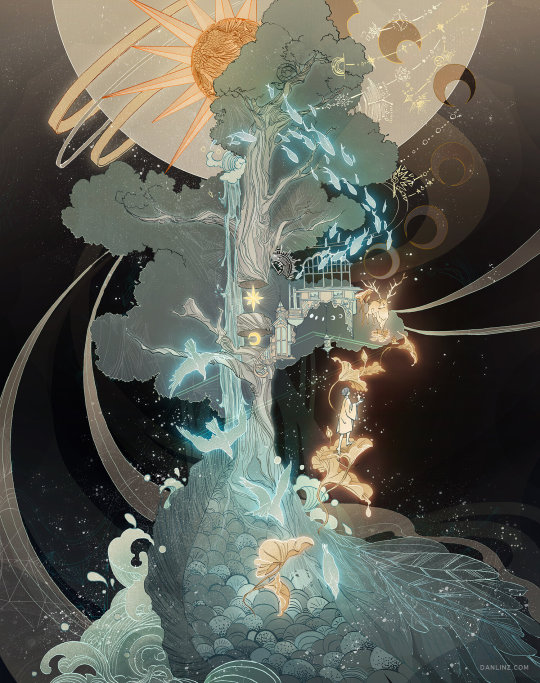

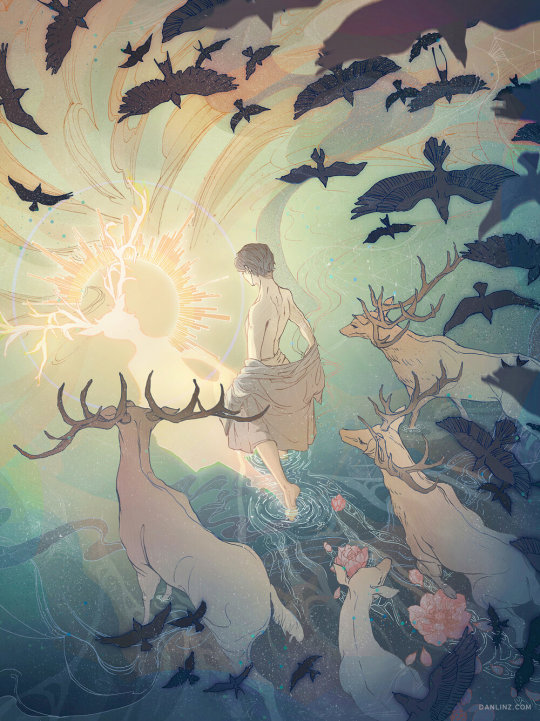

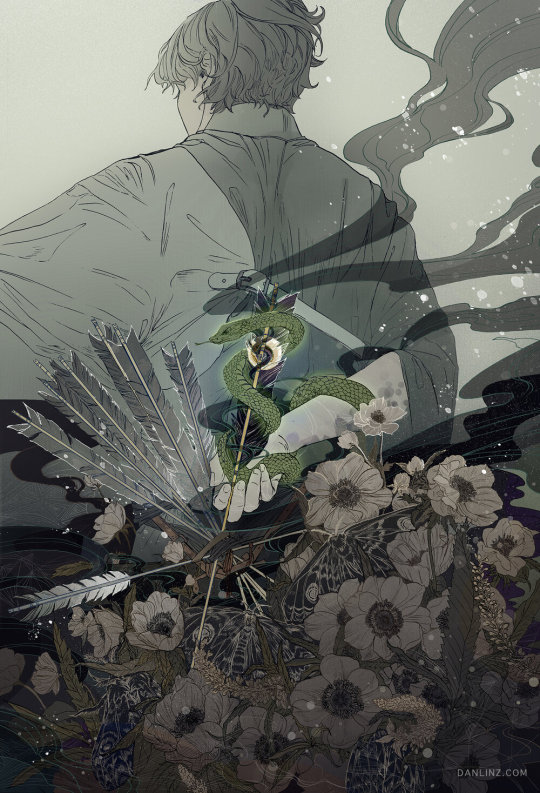
A Deer of Nine Colors by danlin zhang
8K notes
·
View notes

